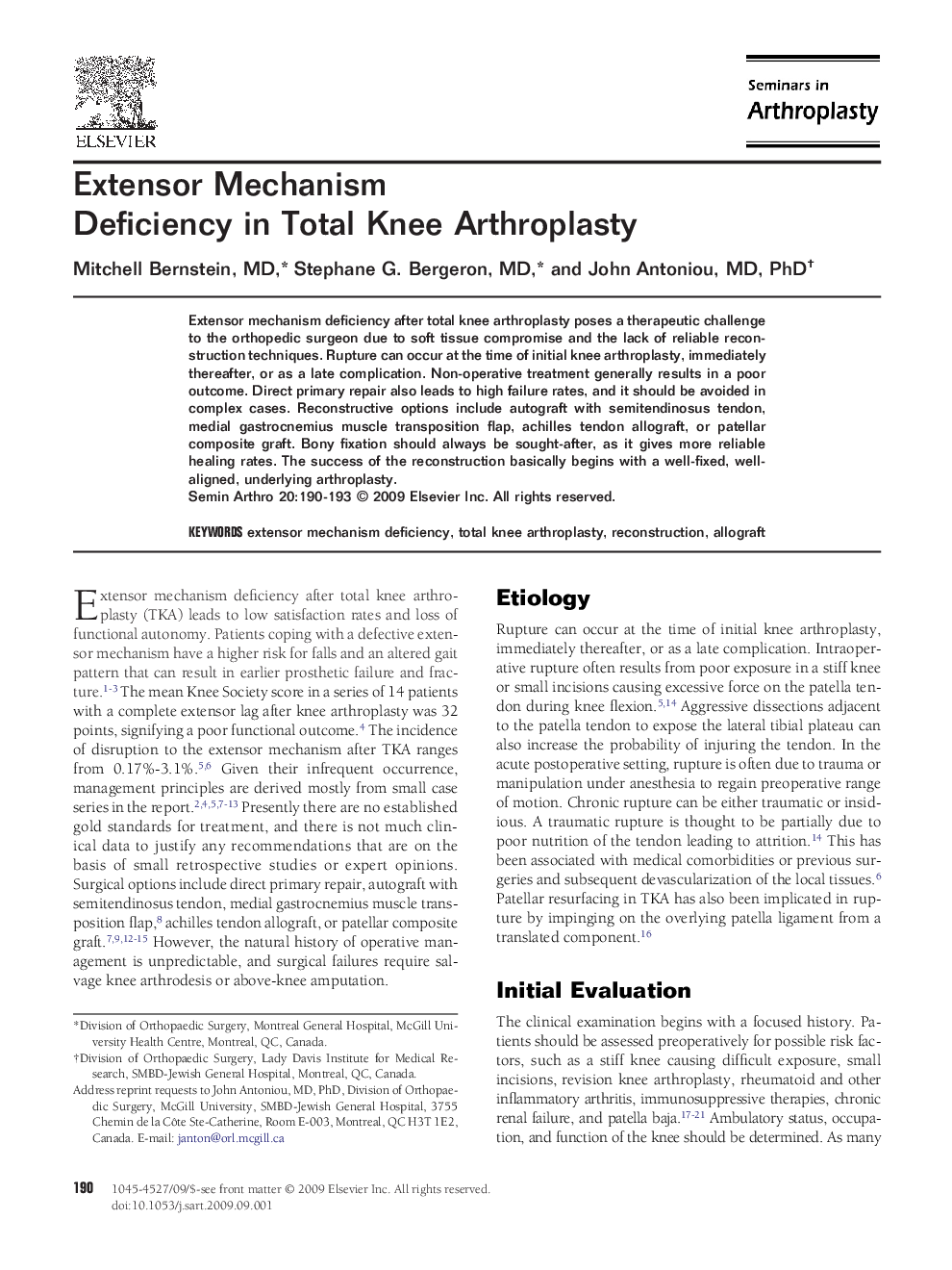| Article ID | Journal | Published Year | Pages | File Type |
|---|---|---|---|---|
| 4094223 | Seminars in Arthroplasty | 2009 | 4 Pages |
Abstract
Extensor mechanism deficiency after total knee arthroplasty poses a therapeutic challenge to the orthopedic surgeon due to soft tissue compromise and the lack of reliable reconstruction techniques. Rupture can occur at the time of initial knee arthroplasty, immediately thereafter, or as a late complication. Non-operative treatment generally results in a poor outcome. Direct primary repair also leads to high failure rates, and it should be avoided in complex cases. Reconstructive options include autograft with semitendinosus tendon, medial gastrocnemius muscle transposition flap, achilles tendon allograft, or patellar composite graft. Bony fixation should always be sought-after, as it gives more reliable healing rates. The success of the reconstruction basically begins with a well-fixed, well-aligned, underlying arthroplasty.
Related Topics
Health Sciences
Medicine and Dentistry
Orthopedics, Sports Medicine and Rehabilitation
Authors
Mitchell MD, Stephane G. MD, John MD, PhD,
